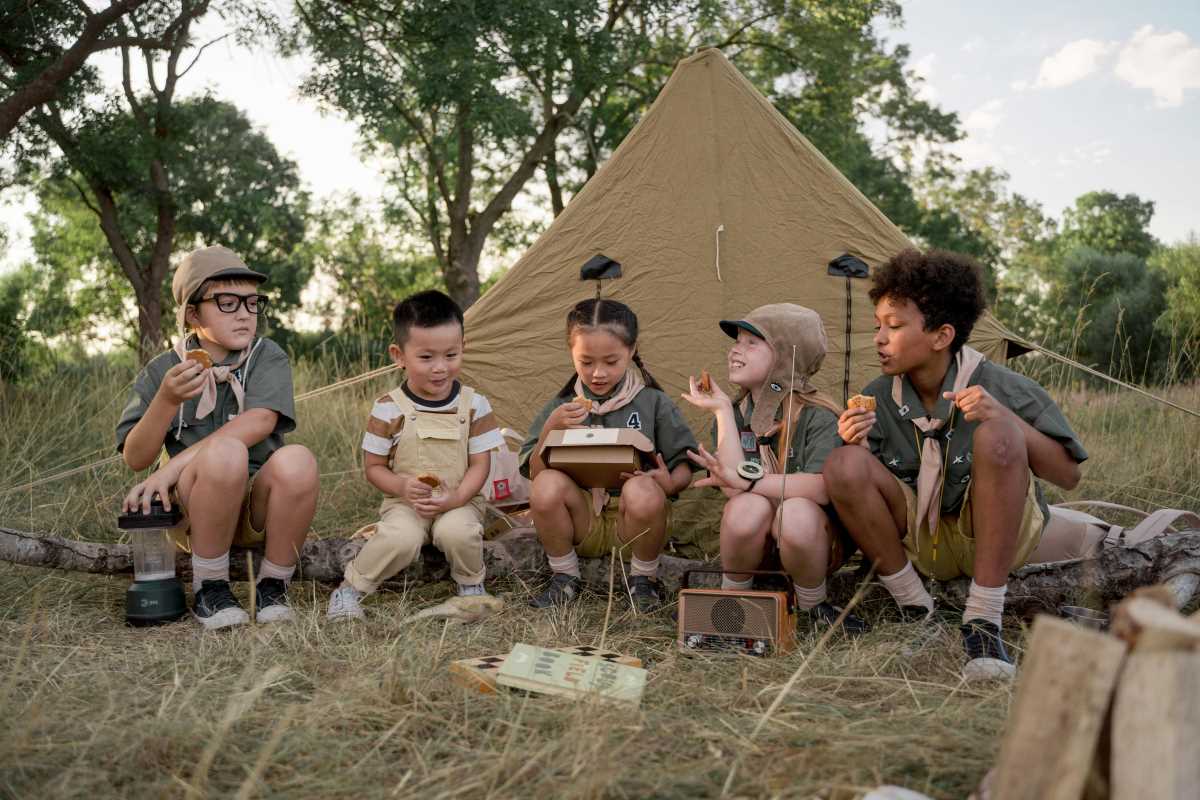Reading together as a family is about so much more than just opening a book. It’s a chance to bond, unplug from screens, and explore worlds of wonder side by side. While everyone’s schedules can get hectic, creating a tradition around reading doesn’t have to be hard. With a little planning and creativity, you can make storytime a treasured part of your routine. Here are seven simple yet powerful ways to build a family ritual around reading, complete with tips, examples, and fresh ideas to keep everyone engaged.
1. Turn Storytime Into a Regular Routine
Routines are powerful because they provide structure and something to look forward to. Just as many families stick to set times for meals or bedtime, designating a daily or weekly moment for reading can foster a sense of consistency. Maybe you start with just ten minutes every evening after dinner or dedicate part of your Sunday mornings to reading together. It doesn’t need to be a big chunk of time. Start small, and you may be surprised by how naturally the reading ritual grows.
For example, one family might establish a nightly “Reading and Cocoa Hour” during the cooler months. After everyone’s had dinner, they gather on the couch, cozy under blankets with mugs of hot cocoa, and share favorite stories. For another family, Sunday might become “Breakfast and Books” time, where pancakes and picture books go hand in hand.
The key here is rhythm. Children thrive on knowing what comes next, and holding a “reading time,” whether for ten minutes or an hour, creates a sacred, predictable space in your family’s day.
Actionable Tip:
Create a visual calendar for younger kids where they can mark off days with stickers or drawings when the family reads together. Not only does this reinforce the routine, but it also makes kids feel more involved in the process.
2. Create a Cozy Reading Nook
Think about the warm and inviting places you enjoy spending time in. Chances are, the lighting, furnishings, and setup make a big difference. The same goes for reading spaces meant for your family. Transforming a corner of your home into a dedicated reading nook can make storytime feel like an event. It doesn’t have to involve elaborate remodeling. A pile of pillows on the floor, a soft blanket, and perhaps a basket filled with books can instantly create a cozy space.
Imagine a rainy afternoon where the family camps out in their reading nook, complete with fairy lights for ambiance. Mom might curl up with a thriller while the kids tackle their freshly borrowed library finds. Maybe the family pet joins, lounging in the corner as everyone flips through pages.
Add some personalization to this space to make it extra special. Kids could hang up artwork inspired by their favorite stories or add book-themed decorations like bookmarks and reading quotes.
Actionable Tip:
Include a small “reading jar” in your nook. Kids can write down the titles of books they’d like to read or drop in suggestions for story ideas when it’s time for family reading.
3. Mix It Up With Different Formats
Who says reading has to stick to paperbacks? One of the joys of modern technology is the sheer variety of ways stories can reach us. This also makes reading more fun for diverse interests and ages. Audiobooks are wonderful for road trips or quiet evenings when everyone just wants to close their eyes and listen. E-books can be handy when traveling or when physical books aren’t accessible.
Maybe your younger child loves picture books, your tween can’t get enough of graphic novels, and your partner is glued to thrillers. Why not make it a goal to sample a new format every once in a while? You could even explore interactive book apps where kids can make choices within the story. Choosing formats collectively might encourage everyone to feel a deeper connection to family reading time.
Example Scenario:
On a lazy Saturday afternoon, the family decides to listen to an audiobook together while drawing or painting. The narration of the story sets the mood, and each family member interprets the story differently through their own artwork.
Actionable Tip:
Offer library trips as a family adventure, allowing each person to pick out their preferred format or title while introducing them to new formats they might not have tried.
4. Get Everyone Involved
One simple way to make the reading experience richer is by engaging everyone in the family. Rotating reading responsibilities or letting different members select the book keeps the dynamic fresh and interactive. Older siblings could read silly voices to entertain younger ones, or everyone could read aloud together like a mini play.
For instance, you might introduce a “Story Selector” role each week. This is the person who picks out the book (or format) and perhaps even sets the reading atmosphere. Do they want stuffed animals lined up as an audience? Perhaps a flashlight-lit reading session in a homemade blanket fort? Empowering children in particular helps them take ownership of their family’s reading ritual.
Example Scenario:
On Fridays, the youngest child selects their favorite picture book to read to the group, while the oldest brings their favorite novel to summarize for discussion. Parents can alternate reading funny voices or leading Q&A sessions about the books.
Actionable Tip:
Create “reading roles” such as reader, timekeeper, illustrator (someone who draws related doodles during the story), or question-asker to ensure everyone feels involved.
5. Pair Books With Activities
Want to extend the magic of reading beyond the page? Pairing books with hands-on activities is a fantastic way to bring stories to life. For example, if you’re reading a story about a garden, you could plant seeds as a family. If the book is about a fantastical kingdom, gather supplies and create colorful crowns or shields to reimagine the characters’ world.
These types of activities leave a lasting impression, especially for younger kids. They create depth and allow children to engage with the story on creative levels. Plus, it gives you an opportunity to spend quality time together, filling your days with both stories and shared experiences.
Example Scenario:
After reading a picture book about baking, the family bakes and decorates cookies together. Or, following a bedtime story about ocean life, you could draw out the sea creatures mentioned, creating an underwater collage.
Actionable Tip:
Keep an activity box with basic supplies like colored pens, scissors, glue, recipe cards, and small craft material handy to make transitions from storytime to activity time seamless.
6. Connect Reading to Everyday Life
Reading doesn’t have to stay confined to bedtime rituals or living room sessions. When you connect the tales you read to your daily life, books start to take on new meaning for everyone in your family. For instance, if you’ve read a classic fairy tale featuring a woodland adventure, you might head to your local park to act out the scenes or identify similar landscapes.
This works well while running errands too. A grocery trip could transform into a scavenger hunt inspired by a character’s favorite foods or a book’s theme. Use books as launching pads to explore the world around you. It encourages curiosity and helps kids spot parallels between their lives and the books they read.
Example Scenario:
After reading about celestial events, head outdoors for a family stargazing evening, pointing out real constellations that match the ones in the story.
Actionable Tip:
Create a reading-inspired family bucket list of things to explore (e.g., visit a local animal shelter inspired by a pet-centered book or learn about honey production after reading a story about bees).
7. Celebrate Reading Milestones
Everyone loves a good celebration, and honoring your family’s reading accomplishments adds a fun and rewarding dimension to this ritual. Set achievable goals, such as finishing a typical number of books each month or completing a series together. Use visual aids to track progress, like a colorful reading chart or a “book tower” built from read titles.
The rewards don’t have to be extravagant. A movie night, a new bookmark, or even letting a family member pick the next read can feel special when tied to a milestone.
Example Scenario:
Imagine announcing to your family, “We’ve read 50 stories this year!” Then, gather everyone to celebrate by re-reading a family favorite or hosting a theme night related to the milestone book.
Actionable Tip:
Make DIY “reading certificates” or create digital badges to hand out when milestones are reached, boosting motivation for everyone.
With these seven steps and a little creativity, you can gradually weave reading into your family’s rhythm.







